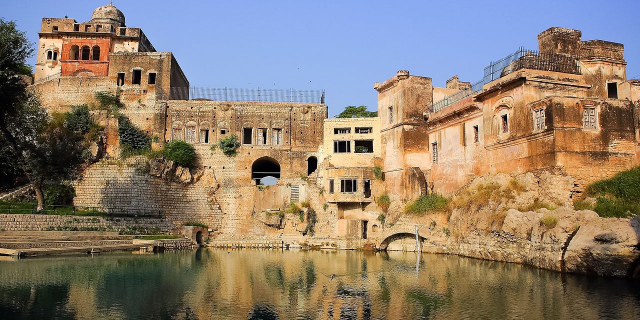The Wazir Khan Masjid (Punjabi, Persian, Urdu: مسجد وزیر خان; Masjid Wazīr Khān) is a 17th-century Mughal masjid located in the city of Lahore, Punjab, Pakistan. The mosque was commissioned during the reign of the Mughal Emperor Shah Jahan as a part of an ensemble of buildings that also included the nearby Shahi Hammam baths. Construction of Wazir Khan Mosque began in 1634 C.E., and was completed in 1641. It is on the UNESCO World Heritage Tentative List.
Considered to be the most ornately decorated Mughal-era mosque, Wazir Khan Mosque is renowned for its intricate faience tile work known as kashi-kari, as well as its interior surfaces that are almost entirely embellished with elaborate Mughal-era frescoes. The mosque has been under extensive restoration since 2009 under the direction of the Aga Khan Trust for Culture and the Government of Punjab, with contributions from the go...Read more
The Wazir Khan Masjid (Punjabi, Persian, Urdu: مسجد وزیر خان; Masjid Wazīr Khān) is a 17th-century Mughal masjid located in the city of Lahore, Punjab, Pakistan. The mosque was commissioned during the reign of the Mughal Emperor Shah Jahan as a part of an ensemble of buildings that also included the nearby Shahi Hammam baths. Construction of Wazir Khan Mosque began in 1634 C.E., and was completed in 1641. It is on the UNESCO World Heritage Tentative List.
Considered to be the most ornately decorated Mughal-era mosque, Wazir Khan Mosque is renowned for its intricate faience tile work known as kashi-kari, as well as its interior surfaces that are almost entirely embellished with elaborate Mughal-era frescoes. The mosque has been under extensive restoration since 2009 under the direction of the Aga Khan Trust for Culture and the Government of Punjab, with contributions from the governments of Germany, Norway, and the United States.
Construction of the mosque began under the reign of Mughal Emperor Shah Jahan in either 1634 or 1635, and was completed in approximately seven years. In the late 1880s, John Lockwood Kipling, father of Rudyard Kipling, wrote about the mosque and its decorative elements in the former Journal of Indian Art.[1][2] The British scholar Fred Henry Andrews noted in 1903 that the mosque had fallen into disrepair.[3]

































Add new comment